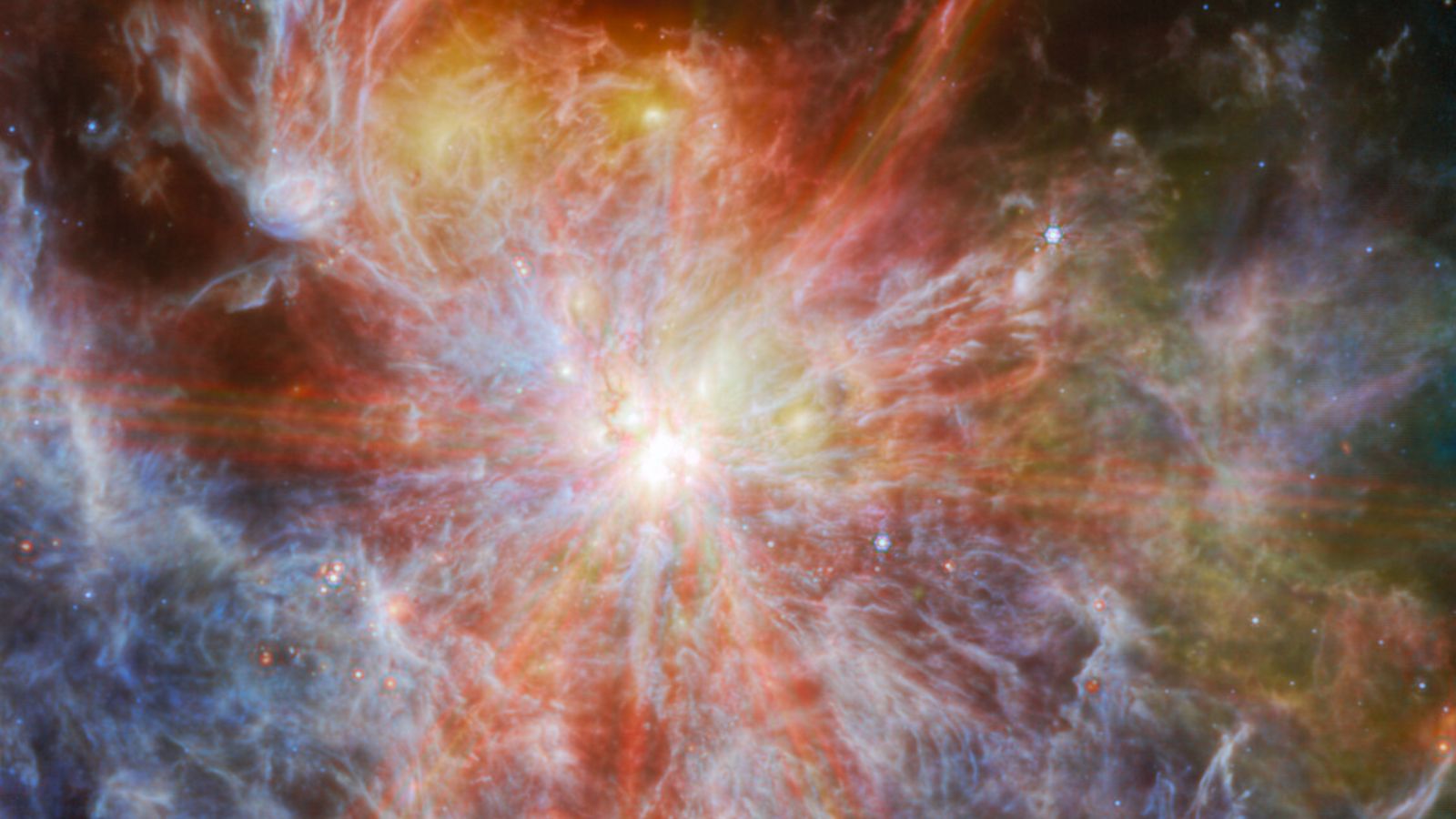
The James Webb Space Telescope took this stunning image of a star-forming nebula called N79, which is a region of ionised interstellar atomic hydrogen. The nebula is in the H II region of the Large Magellanic Cloud, a satellite galaxy of the Milky Way, and was captured by Webb’s Mid-Infrared Instrument (MIRI).
N79 is simply a humongous star-forming celestial region that spans around 1,630 light-years and is in the southwest region of LMC (Large Magellanic Cloud). It is regarded as the younger version of the Tarantula Nebula (officially known as 30 Doradus). However, scientists estimate that N79 has a star formation efficiency that far exceeds the Tarantula Nebula.
This image, in particular, focuses on one of three giant molecular clouds complex called N79 South or S1. The star-shaped pattern that you can see here is a series of diffraction spikes. Just like most other telescopes, Webb uses a mirror to collect light. The design of the mirror on the telescope causes this artifact.
The six largest “star spikes” that you can see in the image are caused by the hexagonal symmetry of the Webb telescope’s 18 primary mirror segments. These sorts of patterns are usually most visible around very bright and compact objects where a lot of light comes from the same place. Even though most galaxies appear very small to our eyes, they are much more spread out than a single star and thus do not cause this pattern.
This particular image centres on one of the three giant molecular cloud complexes, dubbed N79 South (S1 for short). The distinct ‘starburst’ pattern surrounding this bright object is a series of diffraction spikes. All telescopes that use a mirror to collect light, as Webb does, have this form of artifact that arises from the design of the telescope. In Webb’s case, the six largest starburst spikes appear because of the hexagonal symmetry of Webb’s 18 primary mirror segments. Patterns like these are only noticeable around very bright, compact objects, where all the light comes from the same place. Most galaxies, even though they appear very small to our eyes, are darker and more spread out than a single star, and therefore do not show this pattern.
© IE Online Media Services Pvt Ltd
First uploaded on: 26-01-2024 at 14:43 IST

Shambhu Kumar is a science communicator, making complex scientific topics accessible to all. His articles explore breakthroughs in various scientific disciplines, from space exploration to cutting-edge research.

